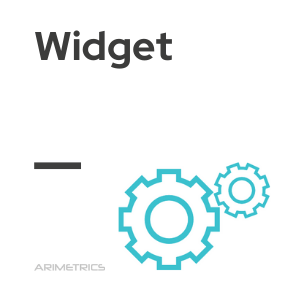
Definition:
A widget is a small application or program designed to facilitate access to the most used functions of a device. Its main feature is that they are integrated into the desktop of the computer or mobile phone and offer us visual information without the need to run anything else. The widgets are free and can be obtained through the Internet.
In programming, the term refers to the part of a GUI (graphical user interface) that allows the user to interface with the application and the operating system. Widgets display information and invite the user to act in various ways. Typical widgets include buttons, dialog boxes, pop-ups, drop-down menus, icons, scroll bars, resizable window borders, progress indicators, selection boxes, windows, cut-off menus, menu bars, switches, and forms.
These widgets can be found not only on the web, but also on operating systems such as Android, iPhone, Windows, etc. Thanks to this, we can add new functionalities that allow us to get more out of the different tools.
Types of widgets
Although there are several types of widgets, these are the most well-known and used.
- Desktop widgets. They are interactive tools that are downloaded to the computer’s desktop. This is the case of search engines, weather applications, clocks, etc.
- Mobile widgets. Same as the previous ones, but adapted to mobile technology. The easiest way to install them is to hold down your finger in an area of the screen where there are no icons and we will get a drop-down with the option of the different widgets.
- Web widgets: The parts of code that are translated into functionality or content and that are programmed from JavaScript, Flash, Silverlight, and Windows Media Player.
- Physical widgets. They are compact mechanisms that integrate typical widget functions, such as alarms, weather, etc.
They are mostly not free and do not produce income. However, they are very valuable tools for companies to the extent that they can be used to generate traffic to the website or simply to create brand image(branding).
Best calendar widgets
Calendar widgets are, along with weather and map widgets, the most commonly used on websites. Here are just a few examples:
- Google calendar: The Google Calendar application allows users to create personal or public calendars after signing up for a Google account. The accounts are free and Google stores the calendars within its cloud computing system.
- aCalendar: The application allows you to switch back and forth between a lot of different display options, including a very interesting day/week/reminder view.
- Digical: DigiCal is a minimalistic and easy to use calendar application that synchronizes with all calendar servers such as Google Calendar, Outlook.com and Exchange.
- Cozi Family Calendar and Lists: With this widget you can manage daily life and keep the whole family on top of the leading digital organizer for families. Cozi organizes everyone’s schedules, activities and appointments in one place that is accessible anytime, anywhere.
WordPress widgets
Widgets are elements widely used in the preparation of business websites made using WordPress. The usual thing is that they are located in the sidebar or slidebar, in the header (header) or in the footer of the page, and that they preserve the corporate colors and styles of the same.
In WordPress, a widget differs from a plugin in that the plugin brings functionality to the page, while the widget only shows it visually. To put it another way, all widgets have to be included in a plugin, but there may be plugins that do not have widgets.
Another difference between one term and the other is that plugins maintain their structure when the theme of a page designed with WordPress is modified, while the widgets change. To manage them from the WordPress side menu, you have to go to the ‘Plugins’ section and there you can check those that are already installed and add new ones.
If you are looking for recommendations on the most famous widgets in the text editor, these are just a few examples:
- Widgets to add icons and links to the company’s social networks.
- Google Maps. The ability to install a map with the exact location helps a local business a lot. The Google tool allows, in addition to showing the exact point, to see the journey by public transport or visualize the real appearance of the area with Google Street View.
- Most popular posts in a post. It is a way to guide the user on what to read and where to start. They are very useful to highlight certain publications.
- Google Adsense. It allows you to include third-party advertising through Google and monetize any website.
Mobile widgets
In addition to its insertion in a website, widgets allow you to use an Android application on a smartphone without having to open it. Its installation on the home page is very simple. Simply press for a long time on a place where there are no icons and select ‘widgets’ from the drop-down. Thus, we are offered a series of recommendations and you can choose the right one.
The most common mobile widgets are the Google search bar, weather queries or time and date. Some examples of these tools are:
- Overdrop Weather.
- The time in 14 days.
- Month Calendar.

